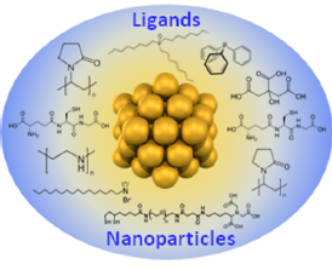Electromagnetics for medical applications
Assoc. Prof. Mariana Dalarsson leads the research group on Electromagnetics for Medical Applications at KTH. The research within the group is mainly focused on analytical and numerical models to investigate the safe implementation of gold nanoparticle (GNP)-mediated medical treatments based on electromagnetic waves. One such treatment is to use GNPs as a means of treating cancer using externally applied radio frequency waves, that is non-invasive for the patient. Under the right conditions, the GNPs can heat up when exposed to electromagnetic radiation, and subsequently kill cancer cells, without damaging nearby healthy tissues. Recently, the group is also researching the use of GNPs for non-invasive deep brain stimulation, as well as within other medical applications in electromagnetics.

Metallic nanoparticles have been proposed for several medical applications, due to their electromagnetic properties when submerged in biological tissues. Under exposure to applied electromagnetic radiation, a localized field enhancement can be generated within the nanoparticle and around its immediate surroundings. This effect can be exploited as a contrast agent for imaging purposes for e.g. cancer diagnosis, or as localized heat sources for e.g. cancer treatment or deep brain stimulation.
The research within the group is focused on the latter: using gold nanoparticles for cancer therapy or deep brain stimulation, in particular when the applied radiation is radiofrequency waves. The long wavelengths of radiofrequency radiation has longer penetration depth into tissues than optical frequencies, allowing access to deeper locations in the targeted tissue. The group is working towards improving our understanding of the physical mechanisms behind radiofrequency heating of gold nanoparticles. Within that effort, the group has been working on detailed models of ligand-coated GNPs, in order to evaluate the effect that the ligands have on the electromagnetic energy absorption, along with some multiple particle absorption models and heating effects.
Another major area of research within the group, closely connected to our most recent project awarded by the Swedish Research Council (VR) on non-invasive deep brain stimulation , is on the development of antenna arrays to achieve focusing of microwave fields in the brain. Non-invasive microwave-based deep brain stimulation (DBS) utilizes external antenna arrays to generate an electric field focal point inside the brain. By adjusting the array configuration, the focal point can be moved or changed in size. However, one of the challenges is predicting how microwaves propagate through biological tissue due to their lossy and dispersive properties. Furthermore, the head is an intricate, multilayered structure which causes internal reflection and transmission inside the head, making microwave-focusing a non-trivial task. The research within the group focuses on relevant physics for modelling the brain, optimization techniques to improve antenna array performance, and investigating more complex approaches such as temporal interference techniques.
Last but not least, the group also focuses more generally on electromagnetics for medical applications. In particular, this concerns the development, optimization and testing of antennas that will operate within the human body (for e.g. biotelemetry) or antennas that will be used for microwave medical imaging.
If you are interested in any of the above research areas, don't hesitate to contact any member of our research group below:
